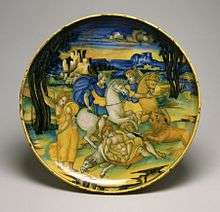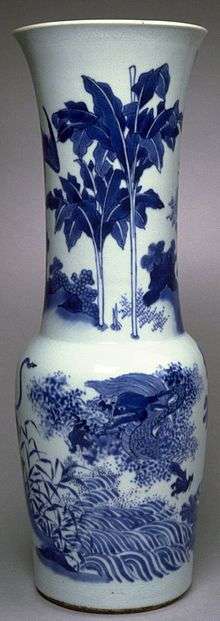Underglaze


Underglaze is a method of decorating pottery in which the decoration is applied to the surface before it is glazed. Because the glaze will subsequently cover it, such decoration is completely durable, and it also allows the production of pottery with a surface that has a uniform sheen. Underglaze decoration uses pigments derived from oxides which fuse with the glaze when the piece is fired in a kiln.
However, because the glost firing is at a higher temperature than used in overglaze decoration, the range of available colours is more limited. Examples of oxides that do not lose their colour during a glost firing are the cobalt blue made famous by Chinese Ming dynasty blue and white porcelain and the cobalt and turquoise blues, pale purple, sage green, and bole red characteristic of İznik pottery. The painting styles used are covered at (among other articles): china painting, blue and white pottery, tin-glazed pottery, maiolica, faience, Delftware.
An archaeological excavation at the Tongguan kiln Site proved that, the technology of underglazed color figure arose in the Tang and Five Dynasties periods and originated from Tonguan, Changsha.[1]
References
- Fournier, Robert, Illustrated Dictionary of Practical Pottery (Van Nostrand Reinhold, 1973) ISBN 0-442-29950-8
- Hamer, Frank, and Hamer, Janet, The Potter's Dictionary of Materials and Techniques (A&C Black/University of Pennsylvania Press, 2004) ISBN 0-8122-3810-9